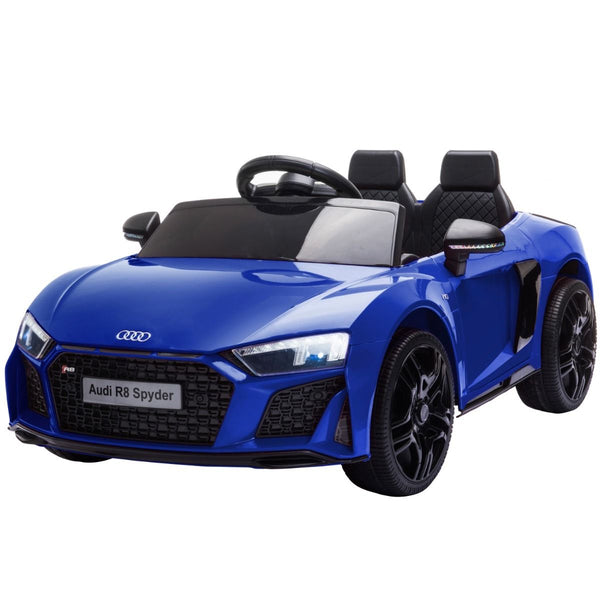Excellent Reasons To Picking Kids Cars
Wiki Article
What Do I Need To Know About Battery Life And Charging Times Of An Electric Ride-On Children's Car?
Knowing the charging duration and the battery's life span for an electric ride on kids cars will allow you to ensure uninterrupted playtime. Here's everything you must be aware of - Type of battery
The majority of electronic ride-on vehicles for children use rechargeable batteries. These are typically lithium-ion batteries or lead acid batteries. Lithium-ion batteries have a greater battery lifespan than lead acid and are charged faster.
Battery Capacity
The battery capacity, measured in ampere-hours (Ah) or Watt-hours (Wh) will determine how long the ride-on car can operate on a single charge. Battery capacity is important because it determines how long the car's ride-on capabilities last before charging.
Run Time -
The runtime of an electric car is how long the vehicle is able to run continuously on only one charge of battery. The run time of an electric ride-on car will vary depending on the factors such as the battery's capacity and motor power. It is also dependent on the terrain and the amount of weight the driver.
The typical electric ride-on car run times vary from 30 minutes and two hours on a single charge. However, certain batteries with high capacity may offer longer durations.
Charging Time
The charging duration refers to the time it takes to fully charge the battery after it has been depleted. The charging time can differ based upon the battery's capacity, charger specifications and the method of charging.
In general the time to charge an electric ride-on vehicle is between 8 to 12 hours. Certain models can charge faster speeds, especially using lithium ion batteries.
To ensure safety and long-lasting battery life, it's important to charge the battery in accordance to the manufacturer's instructions. Battery performance and longevity could be impacted by overcharging or undercharging.
Charge Methods -
Chargers that charge electric rides are typically plugged into standard household outlets. Certain models come with fast-charging capabilities or a smart charging system that monitors battery charge state and adjusts rate of charging in line with the state of charge.
To avoid battery damage or damage to electrical systems, ensure the charger that comes in the ride-on car is compatible with the charging port.
Additional Batteries
Some electric ride-on vehicles provide the option of purchasing additional batteries, or even spare batteries for longer playtime. You can replace the worn-out batteries with ones that are fully charged, so you'll have less time between sessions.
Understanding the battery and charging time of a ride-on kid's car will help ensure that your child and you have fun, uninterrupted playtime and exciting adventures. Utilizing the right charging techniques and charging the battery regularly will prolong battery life. Read the top Audi ride on car for more advice including electric toy car, ride of car, car for toy, kiddies cars, ride electric car, toy the car, childrens ride on, electric toy car, electric two seater cars, car on ride and more. .

What Are The Advantages Of The Ride On Car?
Ride-on cars come with a wide range of features and accessories that enhance the fun experience and create an immersive and realistic driving experience for kids. Here are some of the most common features and extras available for ride-on vehicles: - working headlights
A lot of ride-on vehicles are fitted with headlights that work and highlight the way ahead, increasing realism and visibility, especially in dark areas or in the dark.
Horn Sounds
Children can simulate driving an actual vehicle using a steering knob or a sound.
MP3 Player Compatibility
Some ride-ons are compatible with MP3 devices which allows your child to connect a audio device using USB or an accessory port. While driving the ride-on car, they can listen to music that they love.
Realistic Engine Noises -
Ride-ons can have built-in sound effects which mimic realistic sounds like engine noises, revving, or acceleration. Children may feel like they're driving an actual car.
Remote Control
Some ride-on cars have an parental controller that lets parents supervise and control the car of their children from a distance. Parents can control their ride-on car, control its speed or even stop it from a distance. This lets them feel secure and at ease.
Seat Belts
Safety harnesses and seat belts are often included in vehicles that ride on. They add an additional layer of security, preventing children from falling off while playing.
Doors that Work -
Some ride-on vehicles have doors that work and can be opened or closed. This allows children to effortlessly enter and exit the vehicle and adds to the realistic driving experience.
Storage Compartment
Certain ride-on cars come with an interior compartment or trunk where kids can store small items like snacks or toys. This adds versatility and convenience to the ride.
Adjustable Seats -
Certain ride-on cars feature adjustable seats that can be shifted forward or backward to accommodate children of various sizes or to provide extra legroom as they increase in height.
Remote Emergency Stop Buttons
In addition to the remote control a few rides on vehicles also have an emergency stop button that is controlled by remote. Parents can use this feature to stop their car in the event of an emergencies or danger.
These features and accessories contribute to the overall fun of realism, authenticity, and security of the ride-on car that allow children to participate in imaginative play and have thrilling adventures when driving their own car. Check out the top rated read this for kids ride on cars for more tips including car toy toy, toy with car, cars pedal car, toy car for car, electric ride on, toy car, electric two seater cars, ride electric car, race car toy, electric ride on cars and more. .

What Remote Control Options Are There For Children's Cars That Are Available? What Are The Pros And Cons?
Remote control cars for children are also referred to as RC cars or remote-controlled cars are available in different sizes and styles as well as price ranges to suit different budgets and tastes. The pros and cons as well as the sizes styles, models, and costs of remote-controlled vehicles for children are listed below.
Electric RC Cars – These are battery-powered, remote-controlled vehicles that can be operated outdoors and indoors. These cars come in a variety of styles like buggies, trucks and sports cars.
Nitro RC Cars : Gas-powered cars that are operated remotely and have more performance, but require more maintenance. They tend to be larger and more costly than electric RC vehicles.
Scale models are replicas of real life vehicles including trucks and cars. They are also operated remotely. Scale Models are available in a variety of scales that range from 1-10 to 1-24. Larger scales give greater detail and an authentic appearance.
Sizes -
Remote-controlled cars for kids come in a variety of sizes. From micro-sized to full-scale replicas, they come in a variety of dimensions and shapes. The size of the vehicle will impact its speed, performance and braking characteristics.
Micro-sized cars are small and compact. They are ideal for smaller children as well as indoor use. Models with larger scales offer more power and durability and are therefore ideal for off-road and outdoor racing.
Prices
Prices for remote-controlled children's vehicles vary according to factors like dimensions, features, and brands.
Small electric and nitro powered RRC cars are available in sizes that range from $20 up to $100.
The price of scale models and hobby grade RC vehicles can range from a few hundred dollars to more than a thousand dollars depending on their performance and the level of detail.
Pros & Cons
Pros -
Remote Control Cars for Children - These cars are great for entertainment. They are able to be enjoyed by adults as well as children.
Skill Development. Driving a RC car allows children to develop hand-eye-coordination spatial awareness, problem-solving and spatial skills.
Social interaction. You can go on RC vehicles with your friends and family and encourages social interaction.
Customization - A lot of RC vehicles can be upgraded by adding upgrades and accessories, which will enhance their performance and appearance.
Cons
Cost - Remote control vehicles for children, especially ones with top-of-the-line features and hobby-grade models, can be very expensive.
Learning Curve: Operating an RC vehicle requires a lot of practice and skill, and even younger children may struggle with the controls initially.
Maintenance: Cars in RC require regular maintenance, including cleaning, oiling, and occasionally repair or replacement of parts.
Safety Concerns – RC car safety can be impacted by collisions, electrical hazards, and other dangers if the cars are not controlled and used with caution by an adult.
The most effective remote control for kids' cars are those that provide an educational and fun experience for children of all ages. When selecting the ideal model for your child it is important to consider several factors, including the size, cost features as well as security. For older kids, hobby grade RC car models may be a better choice. However, simpler models could be an ideal choice for children who are younger. Follow the most popular JCB ride on toys kidscars.co.uk advice for more examples including childrens ride on, two seater childrens electric cars, electric ride along car, remote control childrens electric cars, toy a car, ride a toy, two seater electric cars, kiddies cars, childs ride on car, riding digger and more. .
